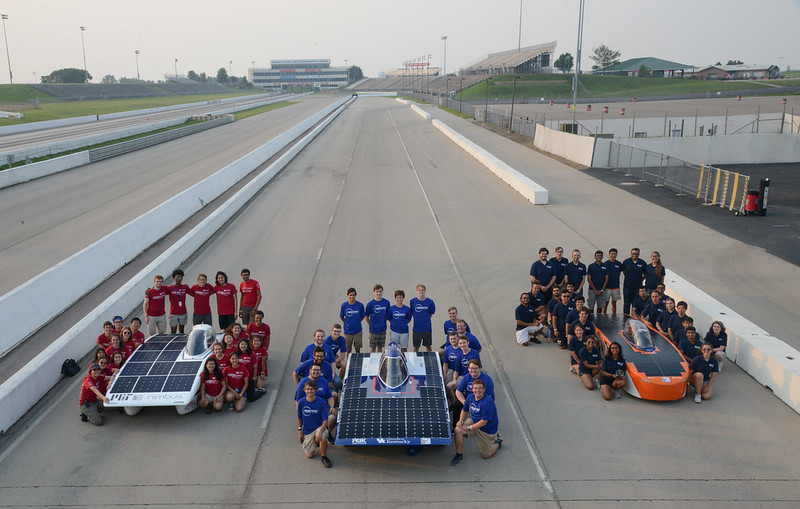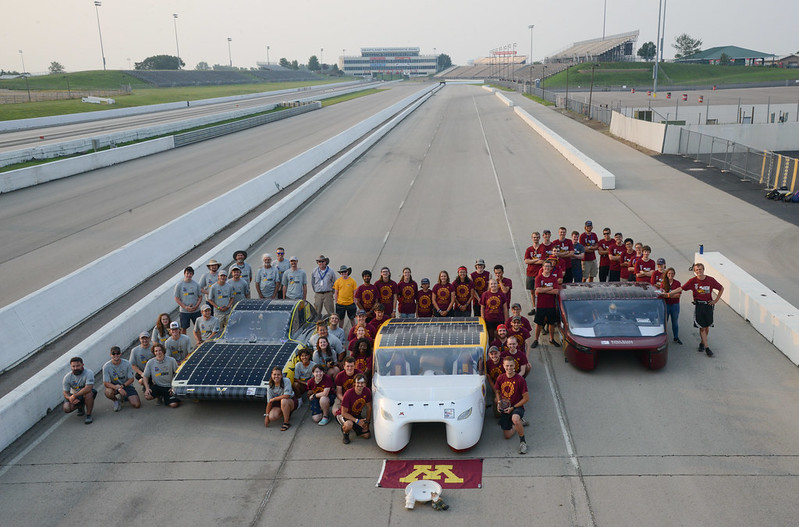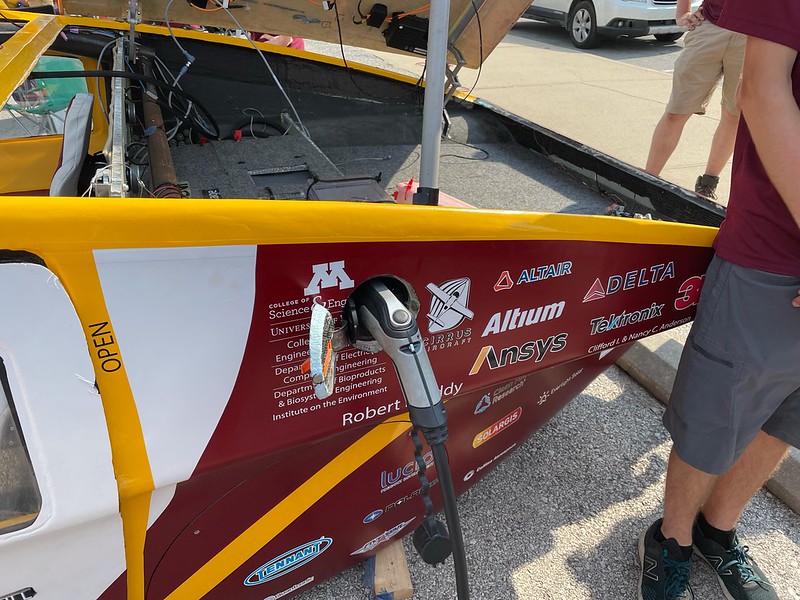Vehicles at the American Solar Challenge compete in two classes. Traditionally solar cars have been sleek, single seaters that optimize energy efficiency and performance on the road. These types of vehicles now fall under the Single-Occupant class. More recently, a Multi-Occupant class of vehicles has been established. This class seeks to optimize energy efficiency and practicality on the road. They must be able to safely carry at least two occupants. The World Solar Challenge (WSC) refers to Single-Occupant Vehicles as the Challenger Class and the Multi-Occupant Vehicles as the Cruiser Class.
The grandfather class allows teams to enter old vehicles which don’t meet the current event regulations but successfully competed within the last 4 years in a recognized solar car competition under an older set of regulations. This class is non competitive.
For the American Solar Challenge, Single and Multi-Occupant vehicles that fail to complete the base legs of the tour without trailering will automatically be ranked below all teams who successfully complete the full base route of the event.
Single-Occupant Vehicles (SOV)
- Seats one person
- Smaller solar array size
- Battery weight is limited
- Recharging the battery via non-solar sources is not allowed
- Scoring is based on the highest overall official distance driven or laps completed over the duration of the event with ties being broken by the lowest overall official elapsed time or fastest lap
- Primary objective is to complete the American Solar Challenge base route without trailering
- Secondary objective is to complete as many official miles as possible
- Tertiary objective is to complete the distance in the shortest elapsed time

Multi-Occupant Vehicles (MOV)
- Vehicles can seat at least 2 people
- Larger solar array size
- Battery weight is unlimited
- Recharging the battery via non-solar sources is allowed
- To do well in this class teams must be able to much more than simply drive as far as possible during the event. They have a very challenging goal of designing and operating a vehicle to optimize a multivariable scoring equation.
- For detailed information about MOV Scoring, please reference the latest event regulations. At a high level, each team is trying to maximize their Score [S] which is computed based on a variety of factors including:
- Person-Miles [D]: The sum of mileage travelled by each occupant – higher is better
- External Energy Usage [E]: The amount of battery charging from non-solar sources – lower is better
- Completion Factor [C]: The official distance driven compared to the maximum distance driven by any MOV team – higher is better
- Target Speed Derate [T]: A team’s score is severely derated if they can’t maintain the average target speed of the event – higher is better
- Practicality Score [P]: During American Solar Challenge events, MOV teams are evaluated by a panel of judges to determine how close they are to meeting the everyday transportation needs of everyday people – higher is better
- Primary objective is to complete the American Solar Challenge base route without trailering
- Secondary objective is to complete the event while traveling at or above the specified target speed
- Tertiary objective is to optimize their Score [S] by maximizing person miles driven and completion factor, minimizing external energy used, and getting high ranks in practicality judging


Grandfathered Vehicles (GRAND)
- Vehicles must have passed Scrutineering and qualification for a recognized solar car event within a four-year period prior to the current event
- Vehicles are not eligible for the Single-Occupant or Multi-Occupant classes as outlined above
- Vehicles are Scrutineered to the regulation set they were designed to and are subject to additional regulations associated with safety from the current Single-Occupant and Multi-Occupant class technical regulations
- Vehicles in this class participate as demonstration cars only (non-competitive)
